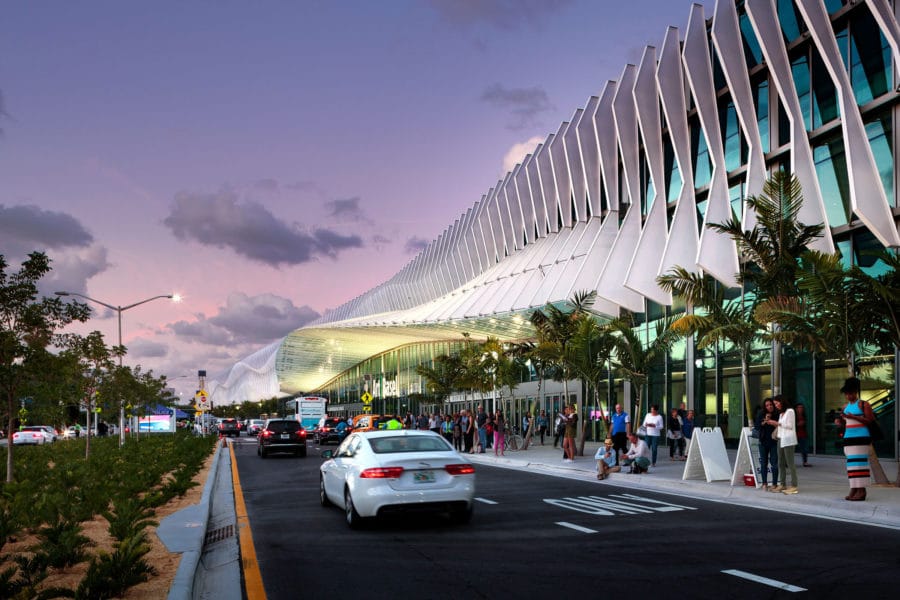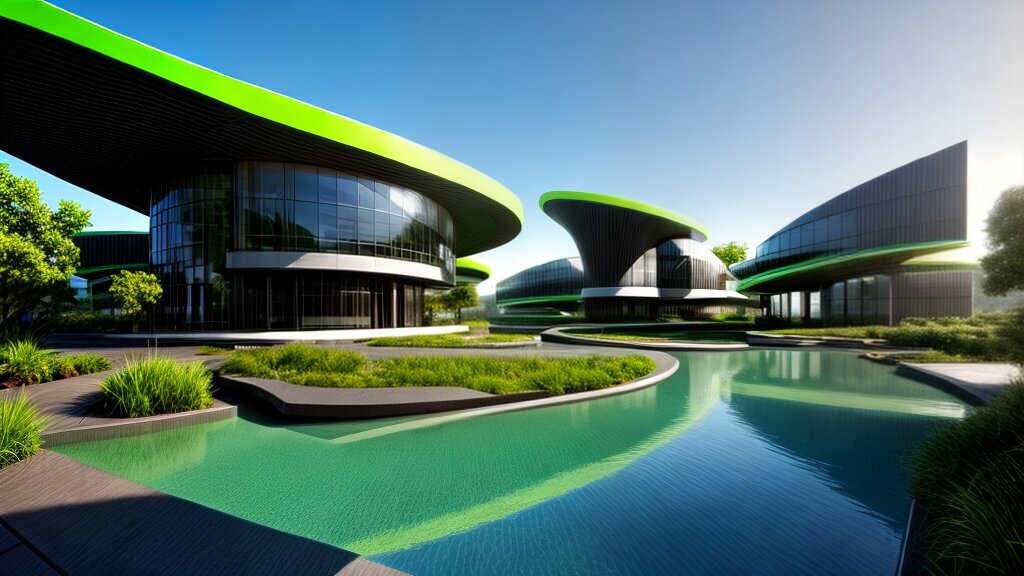In an increasingly unpredictable world, the imperative to design and construct buildings that can withstand, adapt to, and rapidly recover from disruptive events has never been more urgent. Climate change is unleashing more frequent and intense extreme weather phenomena—from superstorms and devastating floods to prolonged heatwaves and wildfires. Coupled with accelerating urbanization, aging infrastructure, and unforeseen socio-economic shocks, our built environment faces unprecedented threats.
Traditional building practices, often focused on static durability, are proving insufficient against dynamic and escalating challenges. This has given rise to the critical discipline of resilient architecture, a holistic and proactive approach to designing, constructing, and operating buildings and urban systems. It’s about creating structures and communities that not only endure but also maintain functionality, ensure occupant well-being, and bounce back quickly from adversity, securing a sustainable and functional future for generations to come.
Understanding Resilience
To truly grasp resilient architecture, it’s essential to distinguish it from mere durability and to comprehend the multifaceted nature of the threats it addresses.
Durability vs. Resilience
While often conflated, durability and resilience are distinct concepts, both crucial for long-lasting infrastructure.
- Durability primarily refers to a material or structure’s ability to withstand wear, pressure, or damage over a prolonged period. A durable building is strong and long-lasting under normal conditions. For instance, a concrete wall built to last 100 years is durable.
- Resilience, however, goes beyond mere strength. It encompasses a system’s capacity to absorb disturbance, reorganize, and still retain its essential function, structure, and identity. A resilient building isn’t just strong; it’s also adaptable and able to recover quickly from an unexpected shock. If that same concrete wall can be easily repaired after an earthquake, or if the building has backup systems to maintain power during an outage, that demonstrates resilience. Resilience includes the ability to “fail gracefully” without catastrophic collapse and to facilitate rapid recovery.
Types of Disruptions
Resilient architecture prepares for a wide spectrum of potential disruptions, categorizing them helps in tailoring appropriate strategies.
- Climate-Related Disruptions: These are among the most pressing and include:
- Extreme Weather Events: Hurricanes, typhoons, blizzards, tornadoes, and severe thunderstorms, leading to high winds, heavy precipitation, and associated flooding.
- Sea-Level Rise: Gradual inundation and increased tidal flooding, impacting coastal infrastructure and communities.
- Heatwaves: Prolonged periods of unusually hot weather, stressing power grids, public health, and urban materials.
- Droughts: Extended periods of low rainfall leading to water scarcity and increased risk of wildfires.
- Geological Disruptions: These events originate from the Earth’s natural processes.
- Earthquakes: Sudden ground shaking leading to structural damage and collapse.
- Volcanic Eruptions: Ashfall, lava flows, and associated hazards.
- Landslides: Mass movements of rock, debris, or earth down a slope, often triggered by heavy rain or earthquakes.
- Human-Made Disruptions: These can be accidental or intentional, often impacting critical systems.
- Power Outages: Failures in electrical grids due to extreme weather, equipment malfunction, or cyber-attacks.
- Infrastructure Failure: Collapse of bridges, water supply systems, communication networks, or transportation links.
- Socio-Economic Shocks: Economic downturns, pandemics (which impact building occupancy and function), or civil unrest that can disrupt urban life and resource access.
- Cyber Attacks: Threats to smart building systems and critical infrastructure controls.
Scales of Resilience
Resilience isn’t just about individual buildings; it’s a layered concept that applies at different scales of the built environment.
- Building Level: This focuses on a single structure’s ability to maintain operations and safety. This involves design choices for structural integrity, energy and water autonomy, and occupant protection.
- Neighborhood/Community Level: This scale considers how groups of buildings, local infrastructure, and social networks interact. It involves planning for local resource distribution, community shelters, and collective preparedness.
- Urban/Regional Level: At the broadest scale, this encompasses how entire cities and regions can adapt to major shocks. This includes robust transportation networks, distributed energy grids, integrated green infrastructure, and strategic land-use planning to mitigate large-scale risks.
Core Principles of Resilient Architecture

Effective resilient architecture adheres to a set of guiding principles that ensure a comprehensive and proactive approach to design.
- Robustness: This principle emphasizes designing buildings and infrastructure to be inherently strong and resistant to damage from anticipated shocks. It involves using durable materials, reinforced structural systems, and construction techniques that can withstand extreme forces like high winds, seismic activity, or heavy loads from snow or water. Robustness minimizes initial damage and provides a stable foundation for recovery.
- Redundancy: Redundancy means providing backup systems, alternative pathways, or multiple components for critical functions. If one system fails, another can take over, preventing total collapse or loss of service. Examples include dual power sources, multiple access roads, or redundant communication lines. This ensures continued functionality even when primary systems are compromised.
- Resourcefulness: This principle refers to the ability of a system, or the people within it, to identify and mobilize resources effectively during a crisis. For buildings, this might involve on-site storage of emergency supplies (food, water, medical kits), access to emergency tools, or systems that allow for self-sufficiency in power and water for a period. At a community level, it means having local resource networks and trained emergency responders.
- Rapidity: Rapidity is the capacity to quickly respond to a disruptive event and initiate recovery. This involves designs that allow for easy repair or replacement of damaged components, pre-planned emergency procedures, and efficient communication systems to coordinate recovery efforts. Faster recovery minimizes downtime and reduces the long-term impact of a disruption.
- Flexibility/Adaptability: This principle emphasizes designing for uncertainty. It means creating buildings and urban systems that can adapt to changing conditions, unforeseen threats, or evolving needs. This might involve modular designs, convertible spaces, or infrastructure that can be easily upgraded or reconfigured. Flexibility allows designs to remain relevant and functional in the face of future climate shifts or societal changes.
- Integration: Resilient design is not a single feature but a holistic approach. Integration means looking at buildings and urban systems as interconnected entities, where various components (structure, systems, site, community) work together to enhance overall resilience. It involves interdisciplinary collaboration among architects, engineers, urban planners, policymakers, and community members to create cohesive and mutually reinforcing solutions.
Strategies and Solutions for Building Resilience
Implementing resilient architecture requires a multi-pronged approach, encompassing planning at the urban scale down to specific building components and technological integrations.
- Site and Urban Planning Strategies: Resilience begins even before the first brick is laid, at the foundational level of how we plan our cities and choose building sites.
- Building Design and Material Strategies: At the individual building scale, specific design choices and material selections are paramount for enhancing resilience.
- Adaptive and Smart Technologies: Beyond static design, modern resilience integrates dynamic and intelligent technologies to monitor, adapt, and optimize.
The Economic and Social Case for Resilience
Investing in resilient architecture is not just an ethical imperative; it makes strong economic and social sense, providing tangible returns beyond initial construction costs.
Cost Savings
- Reduced Repair Costs: Buildings designed for resilience sustain less damage during disruptive events, leading to significantly lower repair and reconstruction costs.
- Lower Insurance Premiums: Insurers are increasingly recognizing and rewarding resilient design with lower premiums, reflecting reduced risk of claims.
- Energy and Water Savings: Passive design, on-site renewables, and efficient water systems lead to substantial reductions in operational utility costs over the building’s lifespan.
Economic Continuity
- Faster Recovery: Resilient buildings and communities recover more quickly from disruptions, minimizing downtime for businesses and critical services. This helps maintain economic activity and reduces the broader economic impact of disasters.
- Reduced Business Interruption: For commercial properties, resilience ensures business continuity, protecting revenue streams and maintaining productivity even during challenging times.
Enhanced Well-being
- Improved Safety: Robust structures, early warning systems, and safe egress pathways protect occupants during disasters.
- Comfort and Public Health: Passive design maintains thermal comfort during power outages, while on-site water and sanitation systems protect public health by ensuring access to basic necessities. Access to natural light and green spaces also contributes to mental well-being.
- Reduced Stress: Knowing that one’s home or workplace is designed to be resilient provides peace of mind and reduces the psychological stress associated with potential disasters.
Property Value and Market Demand
As awareness of climate risks grows, resilient buildings are becoming increasingly attractive to buyers and tenants. They are seen as a safer, more sustainable, and ultimately more valuable investment, commanding higher market demand and potentially increased property values.
Regulatory Compliance and Investment
Governments and regulatory bodies are increasingly implementing building codes and policies that mandate or incentivize resilient design. Furthermore, impact investors and green finance initiatives are directing capital towards projects that demonstrate strong environmental and social resilience, making it easier to secure funding.
Challenges and The Path Forward

Despite the compelling case for resilient architecture, several challenges must be addressed to accelerate its widespread adoption.
- Initial Investment Costs: One of the most frequently cited barriers is the perceived higher upfront cost of implementing resilient features. While lifecycle cost analysis often proves these investments worthwhile, overcoming initial capital hurdles requires financial incentives, innovative financing models, and a long-term investment perspective.
- Lack of Comprehensive Data and Standards: There’s a need for more robust and standardized data on the performance of resilient designs under various stress conditions. Clearer, more unified building codes, rating systems, and performance metrics are essential to guide designers and provide confidence to developers and policymakers.
- Behavioral Change and Public Awareness: Educating building owners, developers, policymakers, and the general public about the value proposition of resilience is crucial. Shifting mindsets from a focus solely on initial cost to a long-term view of risk reduction and operational continuity is key.
- Interdisciplinary Collaboration: While acknowledged as vital, truly effective interdisciplinary collaboration between architects, engineers, urban planners, material scientists, social scientists, and policymakers remains a challenge. Breaking down professional silos and fostering integrated design processes are essential.
- Policy and Regulatory Frameworks: Governments play a critical role in promoting resilience through effective policy. This includes updating building codes to reflect climate risks, offering tax incentives or grants for resilient construction, implementing adaptive zoning regulations, and investing in resilient public infrastructure.
- Global Equity: The impacts of climate change and natural disasters disproportionately affect vulnerable communities, often those with the fewest resources to build resilience. Ensuring that resilient solutions are accessible, affordable, and culturally appropriate for all communities, particularly in developing regions, is a significant ethical and practical challenge.
Conclusion
Resilient architecture is no longer an optional add-on; it is an absolute imperative for shaping a secure and thriving future. As our planet undergoes profound changes and unexpected disruptions become the new normal, our built environment must evolve from static structures into dynamic, adaptive systems capable of absorbing shocks, maintaining essential functions, and rapidly recovering.
By embracing holistic design principles, leveraging advanced materials and smart technologies, and fostering deep collaboration across disciplines and communities, we can construct buildings and cities that are not merely strong but truly resilient. This is a proactive investment in safety, sustainability, and human well-being, paving the way for communities and economies that can thrive amidst uncertainty. The path forward demands foresight, innovation, and a collective commitment to building stronger, more adaptable, and ultimately, more resilient places for everyone.











